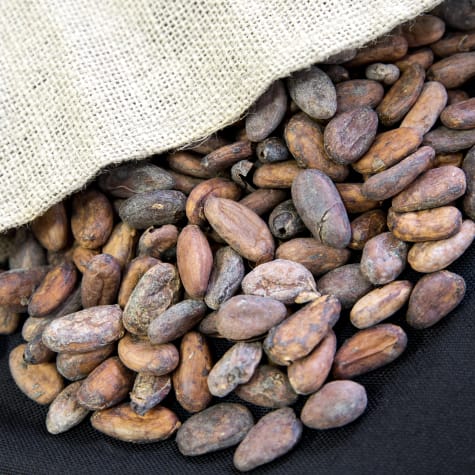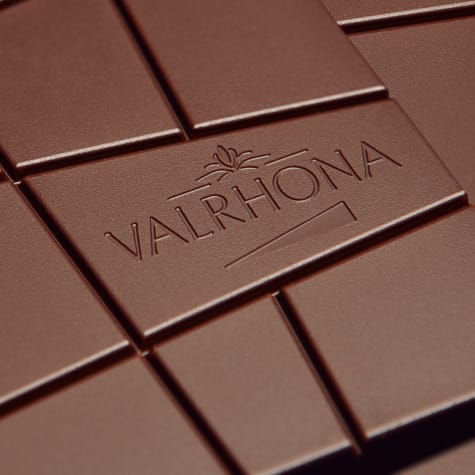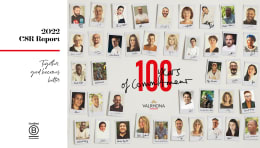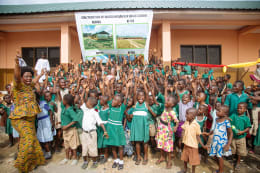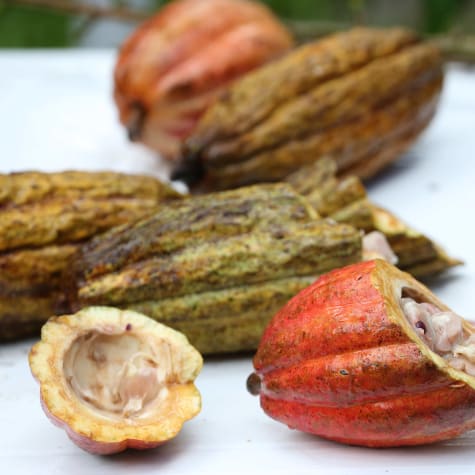
Published on 3/18/21
The AMAZCACAO Project & the Quest for the Next Grand Cru
A Multi-Disciplinary Research Project
Since it launched in 2018, the AMAZCACAO project has united scientists around the question of how Amazonia’s fine cocoas have been and can be domesticated.
Valrhona is taking part in the project in collaboration with CIRAD (the French Agricultural Research And International Cooperation Organization For Sustainable Development) and MUSE (Montpellier Université d'Excellence).
Its objectives are multiple:
- Study how different fine cocoa varieties have been cultivated through history and how they have spread across Latin America
- Identify local Ecuadorian varieties’ main genetic, biochemical and aromatic characteristics
- Preserve and enhance local people’s resources and interests
Paleogenomics: Cocoa’s Genetic Archeology
In 2018, a team of researchers in the heart of the Ecuadorian Amazon region uncovered traces of history’s most ancient cocoa dating back more than 5300 years. It predated the cocoa domesticated by the Olmec and Maya in Central America by 1500 years.
With this research as her starting point for the AMAZCACAO project, Claire Lanaud is now building on it by studying ancestral cocoas’ DNA so that she can pinpoint our different modern-day varieties’ aromatic genealogy.
On the Trail of the World’s Forgotten Varieties
Since the discovery was made, several prospecting campaigns have been funded and organized with local people. It used a rather original methodology, in that local agricultural colleges were asked to help identify potentially interesting trees. Students were invited to bring in cocoa pods from their family farms or neighboring forest. If this initial “harvest” seemed promising, the AMAZCACAO project teams went out to collect samples.
Analyzing Genetic Diversity
By studying the various samples, the AMAZCACAO project was able to map out with greater precision how certain Amazonian varieties took root either naturally or through very ancient farming techniques. Moreover, recent studies have tended to show that cocoa’s domestication took place in this very area. That said, given that this new mapping project has also demonstrated that there is huge genetic disparity between the region’s north and south, it is clear that we still have plenty to learn about cocoa…
The Path Towards New Valrhona Chocolates
Thanks to this initial on-the-ground research, the trees identified by local people were successfully reproduced several times over. Years later, they have finally produced a few pods which our Valrhona experts and the researchers at INIAP (Instituto Nacional de Investigaciones Agropecuarias) and CIRAD have processed into chocolate. The major characteristics and aromatic profiles of these 17 precious cocoas and chocolates have been identified through a series of tests.
There is still lots of work to be done to confirm and refine these results – but there is undoubtedly a future Grand Cru in amongst these trial chocolates!

